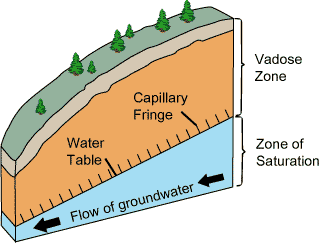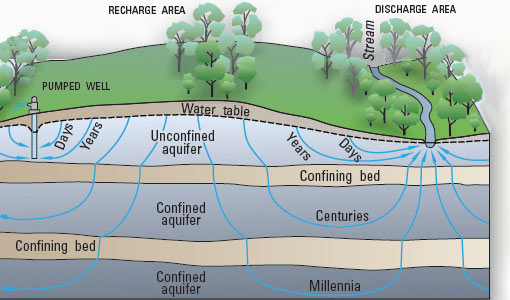13.1: Introduction
- Page ID
- 6104
\( \newcommand{\vecs}[1]{\overset { \scriptstyle \rightharpoonup} {\mathbf{#1}} } \)
\( \newcommand{\vecd}[1]{\overset{-\!-\!\rightharpoonup}{\vphantom{a}\smash {#1}}} \)
\( \newcommand{\dsum}{\displaystyle\sum\limits} \)
\( \newcommand{\dint}{\displaystyle\int\limits} \)
\( \newcommand{\dlim}{\displaystyle\lim\limits} \)
\( \newcommand{\id}{\mathrm{id}}\) \( \newcommand{\Span}{\mathrm{span}}\)
( \newcommand{\kernel}{\mathrm{null}\,}\) \( \newcommand{\range}{\mathrm{range}\,}\)
\( \newcommand{\RealPart}{\mathrm{Re}}\) \( \newcommand{\ImaginaryPart}{\mathrm{Im}}\)
\( \newcommand{\Argument}{\mathrm{Arg}}\) \( \newcommand{\norm}[1]{\| #1 \|}\)
\( \newcommand{\inner}[2]{\langle #1, #2 \rangle}\)
\( \newcommand{\Span}{\mathrm{span}}\)
\( \newcommand{\id}{\mathrm{id}}\)
\( \newcommand{\Span}{\mathrm{span}}\)
\( \newcommand{\kernel}{\mathrm{null}\,}\)
\( \newcommand{\range}{\mathrm{range}\,}\)
\( \newcommand{\RealPart}{\mathrm{Re}}\)
\( \newcommand{\ImaginaryPart}{\mathrm{Im}}\)
\( \newcommand{\Argument}{\mathrm{Arg}}\)
\( \newcommand{\norm}[1]{\| #1 \|}\)
\( \newcommand{\inner}[2]{\langle #1, #2 \rangle}\)
\( \newcommand{\Span}{\mathrm{span}}\) \( \newcommand{\AA}{\unicode[.8,0]{x212B}}\)
\( \newcommand{\vectorA}[1]{\vec{#1}} % arrow\)
\( \newcommand{\vectorAt}[1]{\vec{\text{#1}}} % arrow\)
\( \newcommand{\vectorB}[1]{\overset { \scriptstyle \rightharpoonup} {\mathbf{#1}} } \)
\( \newcommand{\vectorC}[1]{\textbf{#1}} \)
\( \newcommand{\vectorD}[1]{\overrightarrow{#1}} \)
\( \newcommand{\vectorDt}[1]{\overrightarrow{\text{#1}}} \)
\( \newcommand{\vectE}[1]{\overset{-\!-\!\rightharpoonup}{\vphantom{a}\smash{\mathbf {#1}}}} \)
\( \newcommand{\vecs}[1]{\overset { \scriptstyle \rightharpoonup} {\mathbf{#1}} } \)
\( \newcommand{\vecd}[1]{\overset{-\!-\!\rightharpoonup}{\vphantom{a}\smash {#1}}} \)
\(\newcommand{\avec}{\mathbf a}\) \(\newcommand{\bvec}{\mathbf b}\) \(\newcommand{\cvec}{\mathbf c}\) \(\newcommand{\dvec}{\mathbf d}\) \(\newcommand{\dtil}{\widetilde{\mathbf d}}\) \(\newcommand{\evec}{\mathbf e}\) \(\newcommand{\fvec}{\mathbf f}\) \(\newcommand{\nvec}{\mathbf n}\) \(\newcommand{\pvec}{\mathbf p}\) \(\newcommand{\qvec}{\mathbf q}\) \(\newcommand{\svec}{\mathbf s}\) \(\newcommand{\tvec}{\mathbf t}\) \(\newcommand{\uvec}{\mathbf u}\) \(\newcommand{\vvec}{\mathbf v}\) \(\newcommand{\wvec}{\mathbf w}\) \(\newcommand{\xvec}{\mathbf x}\) \(\newcommand{\yvec}{\mathbf y}\) \(\newcommand{\zvec}{\mathbf z}\) \(\newcommand{\rvec}{\mathbf r}\) \(\newcommand{\mvec}{\mathbf m}\) \(\newcommand{\zerovec}{\mathbf 0}\) \(\newcommand{\onevec}{\mathbf 1}\) \(\newcommand{\real}{\mathbb R}\) \(\newcommand{\twovec}[2]{\left[\begin{array}{r}#1 \\ #2 \end{array}\right]}\) \(\newcommand{\ctwovec}[2]{\left[\begin{array}{c}#1 \\ #2 \end{array}\right]}\) \(\newcommand{\threevec}[3]{\left[\begin{array}{r}#1 \\ #2 \\ #3 \end{array}\right]}\) \(\newcommand{\cthreevec}[3]{\left[\begin{array}{c}#1 \\ #2 \\ #3 \end{array}\right]}\) \(\newcommand{\fourvec}[4]{\left[\begin{array}{r}#1 \\ #2 \\ #3 \\ #4 \end{array}\right]}\) \(\newcommand{\cfourvec}[4]{\left[\begin{array}{c}#1 \\ #2 \\ #3 \\ #4 \end{array}\right]}\) \(\newcommand{\fivevec}[5]{\left[\begin{array}{r}#1 \\ #2 \\ #3 \\ #4 \\ #5 \\ \end{array}\right]}\) \(\newcommand{\cfivevec}[5]{\left[\begin{array}{c}#1 \\ #2 \\ #3 \\ #4 \\ #5 \\ \end{array}\right]}\) \(\newcommand{\mattwo}[4]{\left[\begin{array}{rr}#1 \amp #2 \\ #3 \amp #4 \\ \end{array}\right]}\) \(\newcommand{\laspan}[1]{\text{Span}\{#1\}}\) \(\newcommand{\bcal}{\cal B}\) \(\newcommand{\ccal}{\cal C}\) \(\newcommand{\scal}{\cal S}\) \(\newcommand{\wcal}{\cal W}\) \(\newcommand{\ecal}{\cal E}\) \(\newcommand{\coords}[2]{\left\{#1\right\}_{#2}}\) \(\newcommand{\gray}[1]{\color{gray}{#1}}\) \(\newcommand{\lgray}[1]{\color{lightgray}{#1}}\) \(\newcommand{\rank}{\operatorname{rank}}\) \(\newcommand{\row}{\text{Row}}\) \(\newcommand{\col}{\text{Col}}\) \(\renewcommand{\row}{\text{Row}}\) \(\newcommand{\nul}{\text{Nul}}\) \(\newcommand{\var}{\text{Var}}\) \(\newcommand{\corr}{\text{corr}}\) \(\newcommand{\len}[1]{\left|#1\right|}\) \(\newcommand{\bbar}{\overline{\bvec}}\) \(\newcommand{\bhat}{\widehat{\bvec}}\) \(\newcommand{\bperp}{\bvec^\perp}\) \(\newcommand{\xhat}{\widehat{\xvec}}\) \(\newcommand{\vhat}{\widehat{\vvec}}\) \(\newcommand{\uhat}{\widehat{\uvec}}\) \(\newcommand{\what}{\widehat{\wvec}}\) \(\newcommand{\Sighat}{\widehat{\Sigma}}\) \(\newcommand{\lt}{<}\) \(\newcommand{\gt}{>}\) \(\newcommand{\amp}{&}\) \(\definecolor{fillinmathshade}{gray}{0.9}\)Module 13
Groundwater

Introduction
We will be exploring groundwater and clearing up some of the misconceptions people have about groundwater and how it flows. For example, it is best not to envision groundwater as underground lakes and streams (which only occasionally exist in caves). Instead, think of groundwater slowly seeping from one minuscule pore in the rock to another. Have you ever been to the beach and dug a hole, only to have it fill with water from the base? If so, you had reached the water table, the boundary between the unsaturated and saturated zones. Rocks and soil just beneath the land’s surface are part of the unsaturated zone, and pore spaces in them are filled with air. Once the water table is reached, then rocks and soil pore spaces are filled with water, in the saturated zone.
The water table is said to mimic topography, in that it generally lies near the surface of the ground (often tens of feet below the surface, though this can vary greatly with location). The water table rises with hills and sinks with valleys, often discharging into streams. The water table receives additional inputs as rainfall infiltrates into the ground (this is called recharge). Its position is dynamic; during droughts the water table lowers and during wet times, it rises.

Two important properties of groundwater that influence its availability and movement are porosity and permeability. Porosity refers to the open or void space within the rock. It is expressed as a percentage of the volume of open space compared to the total rock volume. Porosity will vary with rock type. Many rocks with tight interlocking crystals (such as igneous and metamorphic rocks) will have low porosity since they lack open space. Sedimentary rocks formed from well-sorted sediment tend to have high porosity because of the abundant spaces between the grains that compose them. To imagine this, envision a room filled from floor to ceiling with basketballs (similar to a rock composed completely of sand grains). Now add water to the room. The room will be able to hold a good deal of water, since the basketballs don’t pack tightly due to their shape. That would be an example of high porosity.
Permeability refers to the ability of a geologic material to transport fluids. It depends upon the porosity within the rock, but also on the size of the open space and how interconnected those open spaces are. Even though a material is porous, if the open spaces aren’t connected, water won’t flow through it. Rocks that are permeable make good aquifers— geologic units that are able to yield significant water. Sedimentary rocks such as sandstone and limestone are good aquifers. Rocks that are impermeable make confining layers and prevent the flow of water. Examples of confining layers would be sedimentary rocks like shale (made from tiny clay and silt grains) or un-fractured igneous or metamorphic rock. In an unconfined aquifer, the top of the aquifer is the water table.

Groundwater generally flows from areas of higher elevation to lower elevation in the shallow subsurface. Note the flow paths in the figure above. Approximately 20% of the water used in the United States is groundwater, and this water has the potential to become contaminated, mostly from sewage, land fills, industry, and agriculture. The movement of groundwater helps spread the pollutants, making containment a challenge.
Module Objectives
At the completion of this module you will be able to:
- Explain the concepts of porosity and permeability and the importance of these to groundwater storage and movement.
- Define aquifers, aquitards, confining layers, and the differences between confined and unconfined aquifers.
- Explain the concepts of hydraulic head, the water table, potentiometric surface, and hydraulic gradient, and apply the Darcy equation for estimating groundwater flow.
- Describe the flow of groundwater from recharge areas to discharge areas, and the nature of flow in karst systems.
- Explain how wells are used to extract groundwater, the implications of over-pumping a well, and how observation wells are used to monitor groundwater levels
- Describe some of the ways that groundwater can become contaminated, and how contamination can be minimized.
Activities Overview
See the Schedule of Work for dates of availability and due dates.
Be sure to read through the directions for all of this module’s activities before getting started so that you can plan your time accordingly. You are expected to work on this course throughout the week.
Module 13 Assignment: Design Your Own Field Trip
20 points
After you complete the reading, you can start working on Module 13 Assignment – Design Your Own Field Trip
Module 13 Quiz
10 points
Module 13 Quiz has 10 multiple-choice questions and is based on the content of the Module 13 readings and Assignment 13.
The quiz is worth a total of 10 points (1 points per question). You will have only 10 minutes to complete the quiz, and you may take this quiz only once. Note: that is not enough time to look up the answers!
Make sure that you fully understand all of the concepts presented and study for this quiz as though it were going to be proctored in a classroom, or you will likely find yourself running out of time.
Keep track of the time, and be sure to look over your full quiz results after you have submitted it for a grade.
Your Questions and Concerns…
Please contact me if you have any questions or concerns.
General course questions: If your question is of a general nature such that other students would benefit from the answer, then go to the discussions area and post it as a question thread in the “General course questions” discussion area.
Personal questions: If your question is personal, (e.g. regarding my comments to you specifically), then send me an email from within this course

